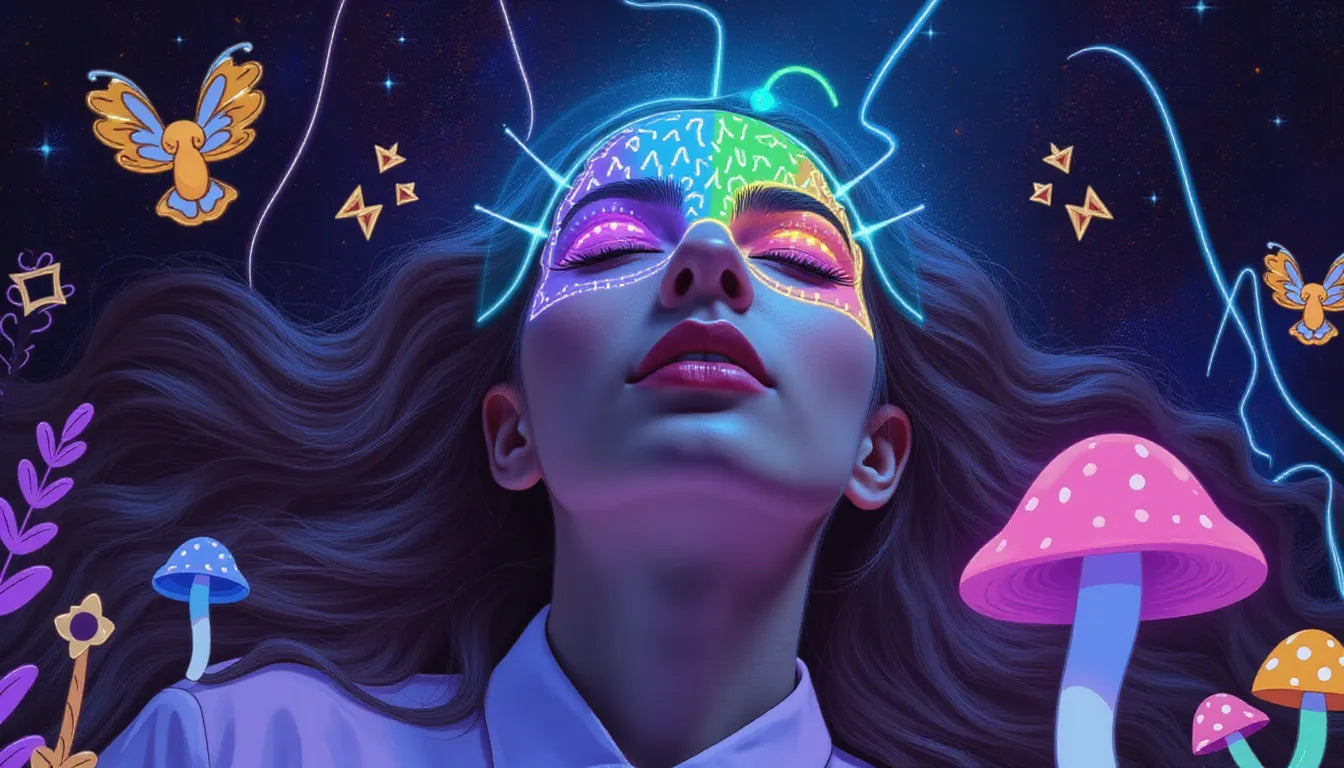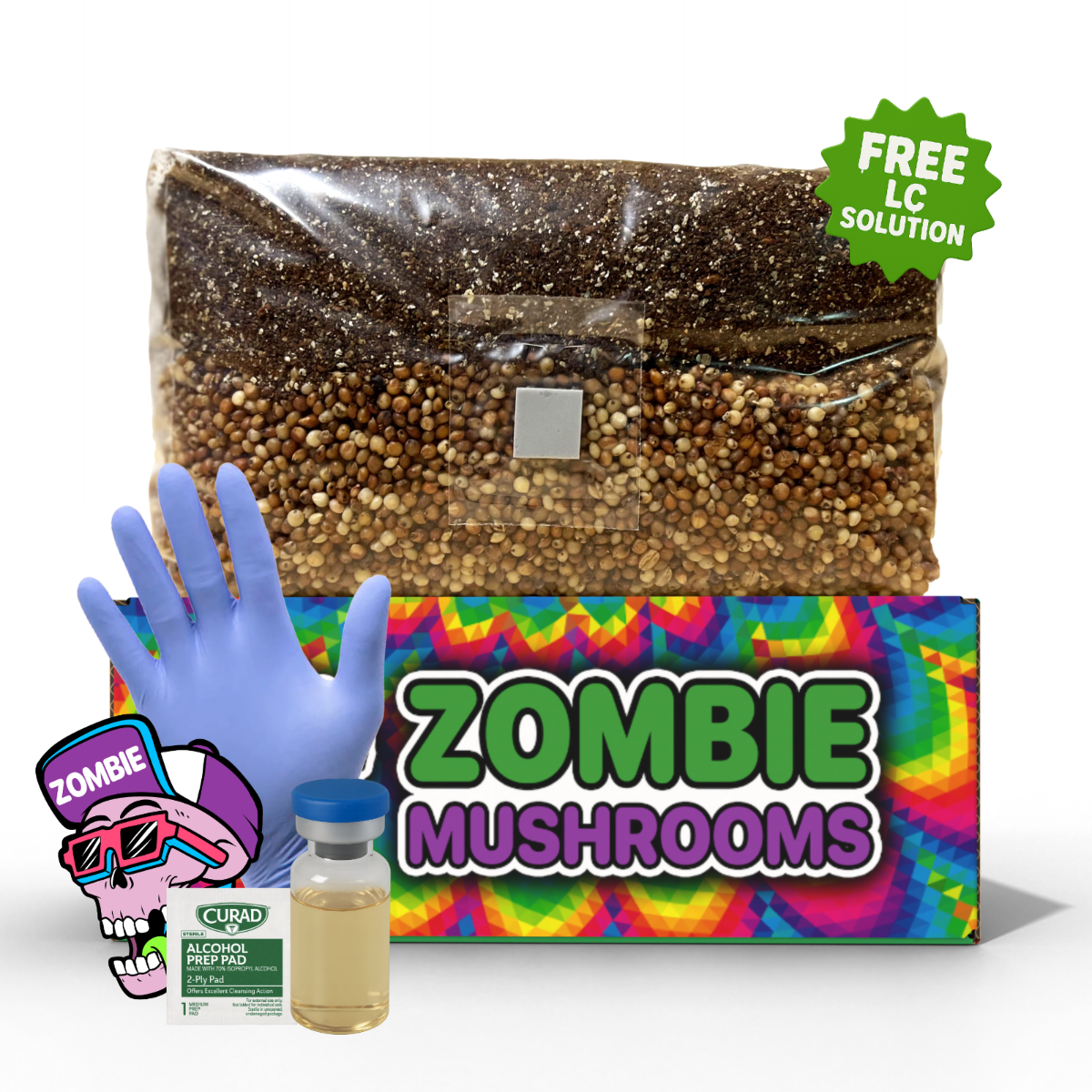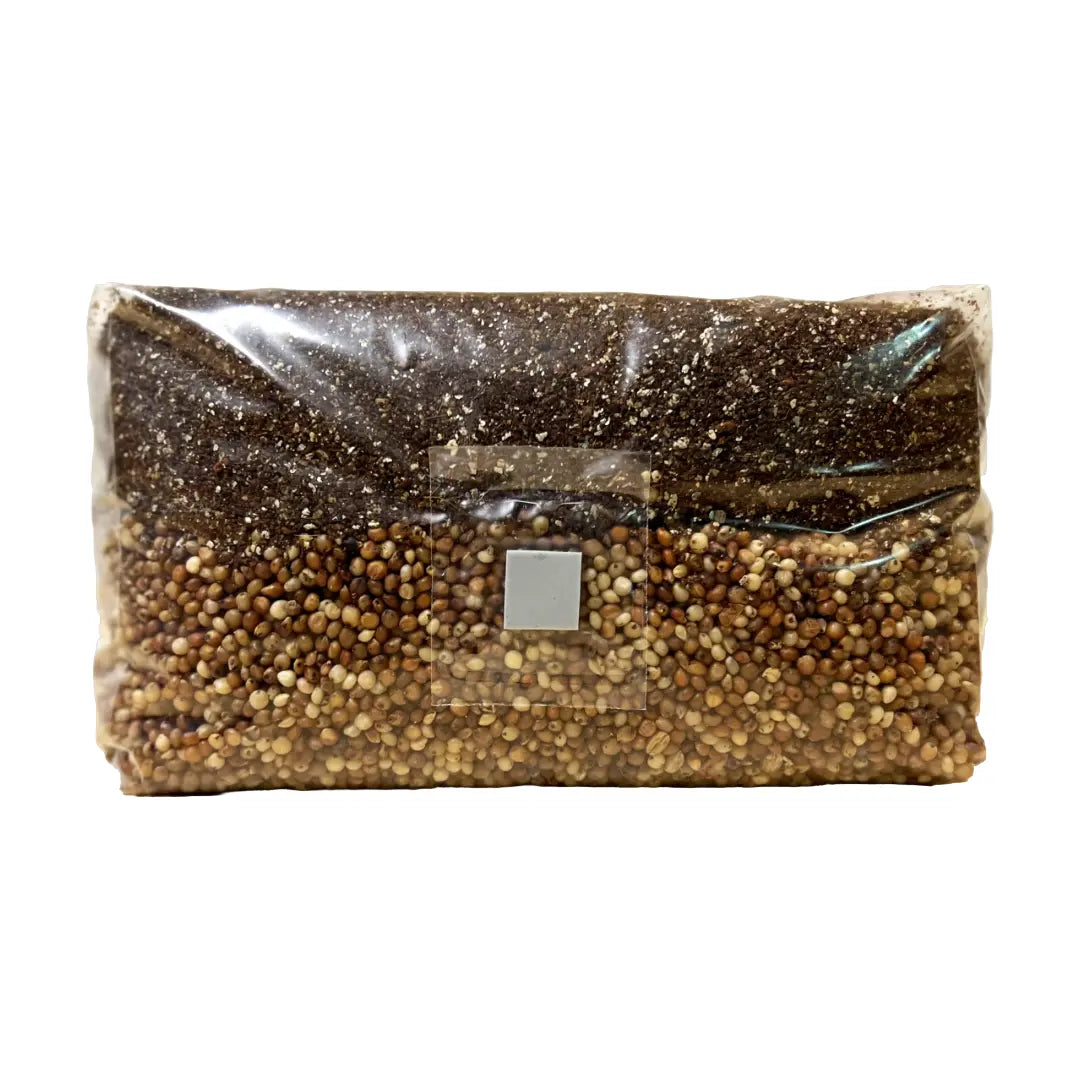⬇️ Prefer to listen instead? ⬇️

- A brain imaging study showed psilocybin increased neural complexity in a woman with minimal consciousness.
- EEG data revealed enhanced gamma wave activity and reduced low-frequency brain waves post-psilocybin.
- Subtle physical changes appeared after administration, hinting at increased internal awareness.
- The case supports psilocybin's potential in treatment-resistant depression and possibly consciousness disorders.
- Ethical considerations are critical when using psychedelics in non-consenting, vulnerable populations.
At Zombie Mushrooms, we always keep up with what's new in mycology, from growing mushrooms to how they affect the mind. So when a new report came out about how psilocybin changed the brain of a woman who wasn't fully awake, it really got us thinking. Could just one dose of this drug help someone who is not fully aware become more conscious? And what might this mean for those battling depression that doesn't get better with other treatments? Tools like a mushroom monotub kit are helping more people explore the cultivation side of fungi, connecting the science of growth with the deeper questions about consciousness.
Let's look at what this case shows us about the brain, consciousness, and how these drugs might change how we think about healing.

What Is Psilocybin and How Does It Affect the Brain?
Psilocybin is a natural drug found in certain mushrooms, often called "magic mushrooms." When you take it, your body changes it into psilocin. This is the form that makes you feel things differently. It goes into the brain and mainly works on serotonin receptors called 5-HT2A. This causes many changes in the brain, like altered perception, how you process feelings, and how you think.
One big thing psilocybin does to the brain is change how it works. Studies using brain imaging, like fMRI and EEG, have shown that psilocybin lowers activity in the brain's default mode network (DMN). This network is linked to thinking about yourself and worrying. When the DMN calms down, and different brain areas talk to each other more, the brain becomes highly connected. This state is like thinking freely and looking inside yourself more.
This leads to altered states of consciousness, heightened senses, deep emotional experiences, and sometimes lasting changes in how a person thinks. Now, scientists are studying how this might help treat things like PTSD, anxiety, and especially depression that doesn't get better with other treatments. Also, new research shows psilocybin is linked to more complex brain activity. This might be connected to higher or more flexible states of being aware.
Administering Psilocybin to a Minimally Conscious Patient
This important case study looked at a woman, age 41, who was diagnosed with "minimally conscious state plus" after a bad brain injury more than a year before. People in an MCS+ state show signs of being aware sometimes, but not consistently. They might follow simple orders, stare at things, or make sounds that make sense.
This woman had tried all the usual treatments, like medicine and brain stimulation, but nothing helped much. She only showed signs of responding sometimes and wasn't getting better. So her caregiver looked for new ways to help her recover.
She knew about psychedelics because she had taken psilocybin before her injury. Because she had used psilocybin before, and because it is now decriminalized in Colorado, they were able to plan an experimental session very carefully. Experts on ethics, doctors, and brain scientists all worked together. They made sure the risks were low and that there was proper medical supervision.

The Psychedelic Session: Dosing and Environment
The care team followed the idea of "set and setting" very closely. This is what scientists who study psychedelics call the person's mindset and the place where they take the drug. They did this to get the same good results seen in studies.
The woman got a dose of 2.5 grams of liquid psilocybin through a tube in her stomach. They used this method because she couldn't swallow. They made her room calming. Soft music played, incense helped her feel things, and they put a blindfold on her sometimes so she would focus inside. Doctors and nurses were there. They checked her health signs and recorded her brain activity using an EEG machine before, during, and after she got the dose.
Doing this is like how it's done in studies of psychedelic therapy. It shows the best ways to get the most help from these drugs for the mind and brain.

Subtle Physical and Behavioral Changes
Just a few hours after she got the psilocybin, the people caring for her saw her moving and acting in ways she hadn't since before the injury. For example, she lifted both her legs and kept them up. She hadn't done that in over a year. And she moved her eyes and mouth in new ways.
She also shivered in one leg that hadn't moved before, and made other body signs they hadn't seen. This seemed to suggest she might be more aware inside. These actions weren't enough to change her diagnosis from MCS+ to conscious. But they were big changes from how her brain usually acted.
Also, they watched her constantly. This helped them know that the changes weren't just because of the place she was in or the people taking care of her. The changes seem to show that psilocybin might wake up brain processes that were hidden, even in brains that are badly hurt.

Brain Imaging Data: A Spike in Complexity and Entropy
The most interesting information came from the EEG data. An EEG machine records electrical activity on the head. It let the scientists see how her brain changed as it happened.
One thing that really stood out was an increase in something called Lempel-Ziv complexity. This is a number that shows how rich and complex the signals in the brain are. This number is usually low when people are asleep from medicine or in a coma. It's much higher when they are awake and conscious. After she got psilocybin, her brain showed a big jump in this complexity number. This suggests her brain was moving toward a more conscious state.
Other EEG results also showed fewer slow brain waves (delta and theta) and more fast gamma waves. This is similar to what happens in healthy people who take psychedelics. Gamma waves are usually linked to learning, remembering, and processing what you sense. These things are usually weaker in people with consciousness disorders.
Put together, these findings suggest that one dose of psilocybin made her brain activity much more complex and active. The other treatments couldn't do this.
Shifting Connectivity and Breaking Rigid Brain Patterns
Looking more at the EEG data showed another important change: less overall connection in the brain. At first, less connection might seem like a bad thing. But when we think about mental health and how the mind works, it might mean the mind is more flexible.
The classic psychedelic state breaks down brain networks that are stuck or "walled-off." This is especially true for networks involved in thinking the same thoughts over and over or being mentally rigid. Breaking these down lets brain circuits that were separate talk to each other in new ways. This supports the idea that psychedelics help change mental processes across the brain.
Also, there was a specific increase in connection for the slow delta brain waves. This might seem strange, but it could help new processes work together in the brain. It might let brain networks that still work talk to each other in new ways. This way of changing brain activity fits with what we know from research on bad depression. In that research, having flexible connections in the brain is seen as key to breaking free from negative thoughts and actions that won't stop.

Consciousness Beyond Behavior: A Diagnostic Breakthrough?
A big problem with figuring out and treating disorders of consciousness is that doctors have to rely a lot on what the person does on the outside to guess what's happening inside. When people can't talk, move on purpose, or communicate—like this woman—it's really hard to know how much they are still experiencing inside.
The clear jump in Lempel-Ziv complexity makes this harder to assume. Even if the person doesn't act differently for long, the brain might still show signs of being conscious when certain chemicals, like those from psilocybin, start working. This is like what we've seen in studies on sleep and when people are under anesthesia. Sometimes people can be conscious inside even if they aren't acting like it on the outside.
This case suggests that measuring how complex brain activity is could be a good way to find times when someone is aware even if they can't show it. Doing this could change how we help these patients get better and how we care for them over time, especially those who don't respond much outwardly.

Analgesic Effects: Psilocybin’s Pain-Modulating Potential
Something else they noticed was that the patient didn't react as much to pain after taking psilocybin. Earlier, her face would twist up and her muscles would get tight when they moved her. That's a classic sign of pain. After the psilocybin, these signs got much weaker, even when they did things that usually caused her pain.
This fits with new research that says psilocybin can change how the brain handles pain. Painkillers usually target specific pain paths. But psychedelics might lower the feeling and thinking parts of pain. They might do this by changing the whole brain and boosting serotonin.
For pain problems like fibromyalgia or nerve pain, where medicines don't work well, psilocybin might be a future way to help people feel better in a more natural, complete way.

The Entropic Brain Hypothesis Comes to Life
What happened in this case study really supports the idea called the "entropic brain hypothesis." This is a modern science idea that links consciousness to how much brain activity varies. This idea says that more varied brain activity means a richer experience for the person. But low variation, like in a coma or bad depression, means less awareness and understanding.
Psilocybin makes brain activity much more varied. It seems to open up ways of sensing and understanding that were shut off by injury or problems. This idea not only helps us understand what psilocybin does. It also suggests that how varied brain activity is could be a sign of a problem and something to try and fix for consciousness disorders.

Implications for Treatment-Resistant Depression
Depression that doesn't get better with treatment is still very hard to handle. Often, it doesn't respond to medicines like SSRIs, talk therapy, or even shock therapy. Research shows people with this kind of depression have less varied brain networks. This is like being mentally rigid, and it comes from how the brain is built and how it works.
Psilocybin can break apart these stuck brain networks. This offers a new way to help. Often, studies report that symptoms get much better after just one or two sessions with psilocybin. When depression symptoms go down, people often find their brains are more flexible, they feel more emotions, and they understand themselves better.
This new case study adds something big: if the same brain processes that help depression can also increase awareness in people who aren't fully conscious, then psilocybin could completely change mental health care and maybe even the science of consciousness.

Why One Case Isn’t Enough: Limits and Questions
The results look good, but we shouldn't assume this will happen with everyone just because of this one report. The people in the study knew what was happening, too. For science to be sure, we need to see this happen again, with different kinds of patients, and in studies that are well set up to compare things fairly.
Things like the brain changing on its own, how people saw the movements, and unknown body processes could also play a part. We need to look into all these things more before we can say for sure that the psilocybin caused the signs of more consciousness. But this first case does give us a starting point for more research, and it gives us hope.

Ethical Challenges in Psychedelic Neuroscience
It is very important to think about the ethics of giving psychedelics to people who can't say yes or no. This woman was given psilocybin after a lot of careful thought, following the law, and getting permission from her family. Still, we must be very careful when using these drugs with people who can't protect themselves easily.
Committees that review research, ethics experts, and doctors must help create the rules for this. They must make sure that every patient's dignity, safety, and right to choose are kept safe. We need to make clear rules for using psychedelics with people who can't communicate. This is needed if we want to bring this powerful tool into regular medicine in a safe way.

The Psychedelic Future: Consciousness as Medicine
This case brings together brain science, ethics, and new ideas. It makes us question what we mean by consciousness. It also suggests that drugs like psilocybin might help find and wake up parts of being human that were sleeping. For people with depression that won't go away, consciousness disorders, or pain that is hard to treat, this offers hope. And for brain science, it's a new area to explore.
As new technology meets old drugs like psilocybin, the limits of what we can do to heal the mind are quickly getting bigger. Want to know more about growing psilocybin mushrooms? We don't sell products that contain psilocybin. But we do help people who want to grow, study, or are just interested in mushrooms. We have good mushroom growing kits to help you start learning about mycology, with knowledge as the main focus.
Citations
- Cardone, P., Núñez, P., Alnagger, N. L. N., Martial, C., van der Lande, G. J. M., Sandell, R., Carhart-Harris, R., & Gosseries, O. (2025). Psilocybin for disorders of consciousness: A case-report study. Clinical Neurophysiology. https://doi.org/10.1016/j.clinph.2025.02.264



